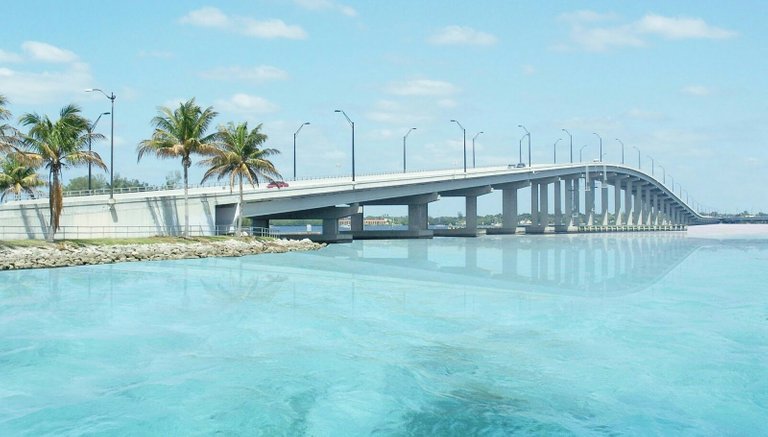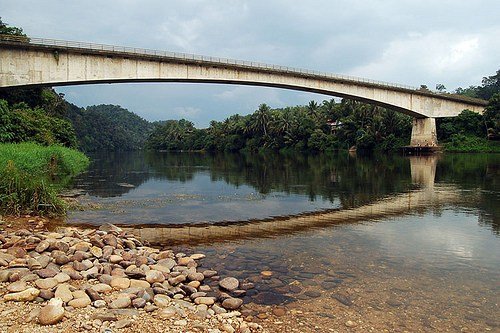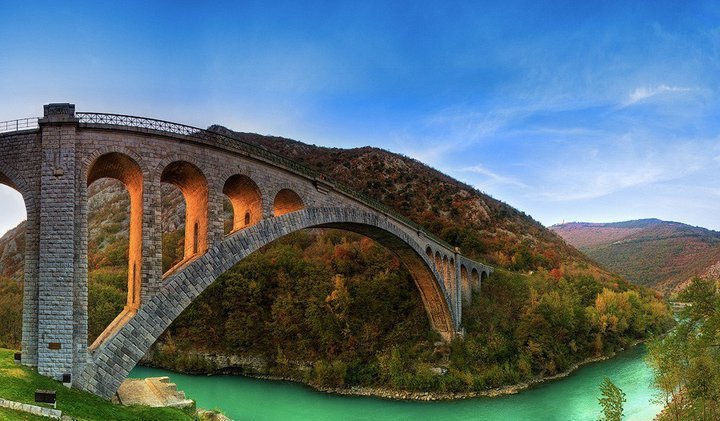Hi steemians ... How are you? Have a nice day today. I as an engineer sometimes get questions from my friends. My friend's question why is there a bridge made curved? For engineers may already know the answer. But for some lay people still wonder. So I will now discuss a little about the curved bridge.

Arch Bridge is a bridge that has a buffer at each end of the arch. The basis of this bridge work is through the transfer of the weight of the bridge and the load on it becomes a horizontal impulse controlled by a buffer on both sides. The bridge load is pushed into the abutment on both sides.
On a long scale, this type of bridge can be made from a series of arches. But commonly used for now is a more economical bridge structure.
Arch bridge design / curve (semicircle) will naturally divert the load received to the bridge floor floor to the abutment that keeps both sides of the bridge so that it does not move sideways. When holding the load due to its own weight and the traffic load, each part of the curve accepts the compressive force, for that reason the bridge must be composed of a material that is resistant to compressive force.

History
The oldest arch bridge ever laid out is in Greece, the Mycenaean Arkadiko bridge. It is estimated to be built around 1300 BC. Corbel stone as the basic material of the bridge is still used by local people.
According to historical records, the Romans were the first to realize in a way the total potential of this arch bridge structure. Although some experts say this curved bridge technique has been known much earlier by the ancient Etruscans and Greeks. In Roman, arch bridges are usually semicircular. An Italian scholar, Vittorio Galliazzo once conducted a survey. He found there were 931 Roman-type bridges, mostly of stone, in about 26 different countries (including the former Yugoslavia).

The curved shape of the structure allows the weight of its own structure to be channeled into the foundation as a normal force of press without flexing. It is very important for stone and concrete pairs material which has comparatively high compressive strength compared to its tensile strength, the material also has a very large rigidity so that the bending factor due to the axial force of the press is not a major problem.
The efficiency of the use of the curved structure will be even higher if its location is exactly like a deep valley or river where the curved foundation lies on hard ground. It makes sense if the arch bridge is one of the simplest bridges because if we build a curved bridge over a hard ground we just need a curve without the need for another part. The hard ground can act as an abutment and we can place the ground or the rock beside it with the exact angle as shown in the picture.
On less hard soil we need to provide a larger abutment to withstand the horizontal force as seen in the figure.
The usefulness of this abutment is to make the tension that occurs as the impulse of the curve decreases to the point that can be borne by the soil because the soil is capable of receiving the press and the ground will not move again (as long as the ground stress is greater than the voltage), there is usually a shear force who work in areas near abutments.
Well that is a little discussion about the curved bridge. May be useful for myself and for the readers as well. Have you got the answer? Certainly this post becomes the answer to the question. thank you
References:
Wikipedia
Civil in Action
Jembatan.id
Congratulations @rizkard24! You have completed some achievement on Steemit and have been rewarded with new badge(s) :
Click on the badge to view your Board of Honor.
If you no longer want to receive notifications, reply to this comment with the word
STOPTo support your work, I also upvoted your post!